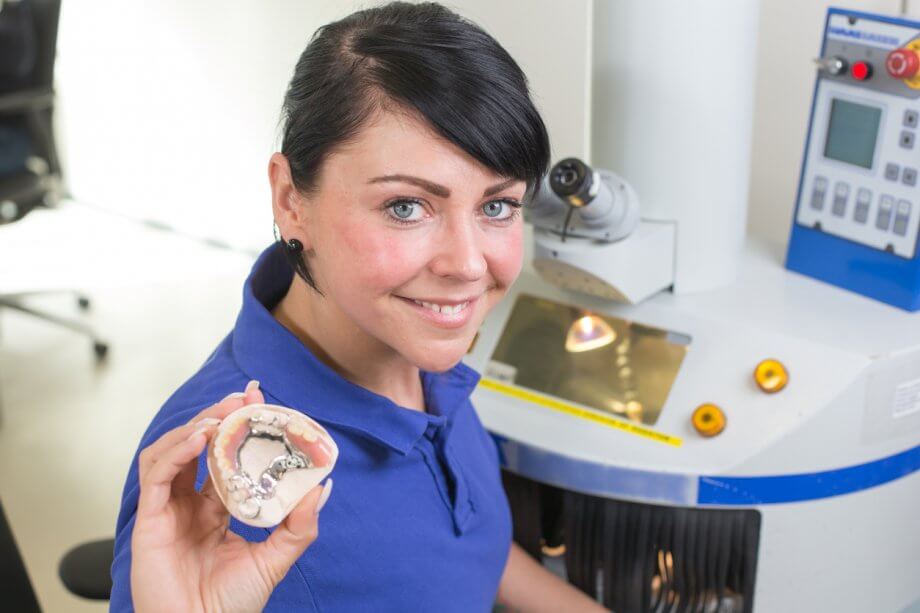Are you trying to decide if a dental bridge may be right for you? If you have one more missing teeth or severely damaged teeth that cannot be restored, a dental bridge is one option for replacing them. There are definite pros and cons to bridges when compared to other solutions, such as dental implants. But to help you decide, it is first necessary to understand exactly what a dental bridge is and how it works.
What is a Dental Bridge?
A dental bridge is an artificial tooth or row of teeth that attach to existing natural teeth or dental implants. They are aptly named because they “bridge” the gap between healthy teeth. There are three basic types of bridges that are categorized by the way they are anchored into place.
- Traditional Bridge. A traditional bridge attaches to healthy teeth on either side of the missing tooth or teeth. The natural teeth are shaved down and crowns are placed over them for added strength and security. Those crowns are attached to the bridge to make a solid row of teeth.
- Maryland Bridge. A Maryland bridge involves a metal structure that is cemented to the back of the teeth to support the bridge. It leaves the natural teeth completely intact.
- Implant Supported Bridge. When a row of three or more teeth need to be replaced, an implant supported bridge is usually the best option. This involves placing a dental implant (an artificial tooth with a metal root that screws into the jawbone) on either side of the bridge to act as the support.
Pros of Dental Bridges
Now that you know how dental bridges work and the different types, here are the biggest advantages to going with a dental bridge over some other choices.
- Bridges cost less than implants. A dental bridge does not require as much precision and is not as invasive to put in place, which means it costs less than a dental implant. Cost is one of the major reasons some patients choose bridges over implants.
- No bone grafting is necessary. If a tooth has been missing for some time, the jaw bone that once held it in place may have weakened or resorbed. Bone grafting is a surgical procedure used to strengthen the jaw bone by placing an artificial or animal bone fragment in place under the gums. It is only necessary for implants, not for bridges.
- Bridges have many advantages over dentures. Dentists often recommend bridges instead of dentures if the patient has enough healthy teeth left. The healthy teeth can act as anchors for bridges, as opposed to dentures that must be anchored to the gums using some time of temporary sealant which is not as secure.
- Bridges are faster than other options. Bridges are faster to put in place than implants, especially because no bone grafting is necessary. Even if a few implants are placed to anchor the bridge, it is faster than getting additional implants.
Cons of Dental Bridges
There are also some disadvantages to bridges when compared to other options for replacing teeth.
- Traditional bridges require putting crowns over perfectly healthy teeth. The healthy teeth on either side of the bridge will have to be shaved down and capped, which results in losing some healthy tooth enamel. This increases the risk of permanent damage to already healthy teeth.
- Maryland bridges can cause damage to the existing teeth and are not sturdy. Because Maryland bridges involve cementing metal to the back of the teeth, it can do permanent damage to the healthy teeth. These bridges are also not as resilient to the pressure from chewing as other bridge types.
- Implant supported bridges take longer and cost more. Because the implants have to be placed first, it can take a few months to complete the process, especially if bone grafting is required first to fortify the jaw bone to support the implant. The cost of the two implants on either side of the bridge does raise the total cost, but it will still be less than getting all implants.
- Bridges don’t correct bone loss in the jaw. When a tooth is missing or extracted, the jaw bone that once held it in place begins to resorb or dissolve. Bridges sit above the gum line and don’t have any roots, as opposed to implants that have an artificial root that is screwed into the jaw bone. Therefore bridges don’t stop bone loss from occurring the way implants do.
- Bridges don’t last as long as implants. Bridges are not expected to last a lifetime as implants are. Because of the damage bridges eventually inflict on the anchor teeth, they may not always be able to remain in place forever.
Aurora Dental Can Help You Choose Your Best Option
Still not sure if a bridge is right for you? You need a professional opinion from a dentist with experience placing bridges and dental implants, like Aurora Dental. Call us today at (330) 562-3400 to schedule a consultation or request an appointment. We will evaluate the current condition of your teeth, listen to your thoughts and concerns, and recommend the best course of treatment.

